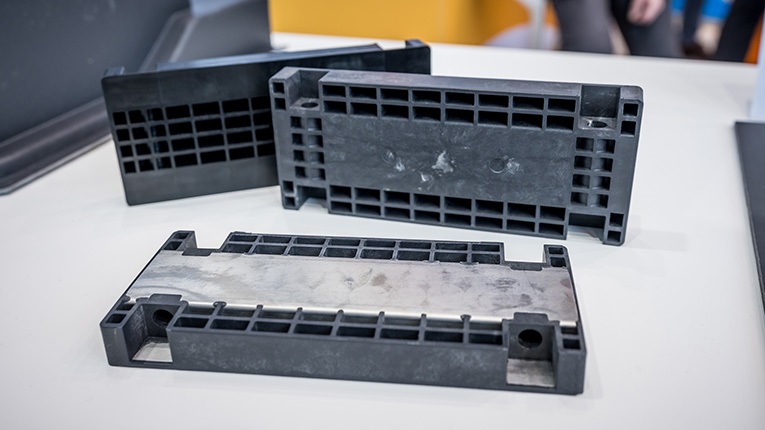SABIC Enables Plastic and Plastic-Metal Hybrid Battery End Plates to Help Create Lighter, More Cost-Effective EV Battery
26/06/2023
As the industry continues to make strides toward a more electrified mobility space, OEMs are continuously tasked with creating lighter, more cost-efficient vehicles with increased range.
Now, through its BLUEHERO™ initiative, SABIC is paving the way for increased use of strong lightweight plastic in various EV battery pack applications. This includes pure plastic and plastic-metal hybrid end plates, mechanisms contained in each battery cell that ensure cell compression and address cell-swelling requirements, to optimize EV battery packs.
To lighten the weight of end plates, SABIC replaced common aluminum applications with its proprietary flame retardant (FR) thermoplastic material, STAMAX™ 30YH570 resin. Following a prototyping trial, the application was produced in three versions: pure plastic, aluminum-plastic hybrid, and steel plastic hybrid. Depending on the structural lifetime requirements, a hybrid or pure plastic design could be preferred.
SABIC will carry out mechanical tests with these variants to validate its performance under different load pressure and temperature conditions.
SABIC’s team is also investigating the potential use of a glass-filled FR VALOX™ (PBT) resin for battery module end plates.
Advantages of Plastic vs. Aluminum
Rigorous testing showed using SABIC’s STAMAX 30YH570 resin for this application generated appealing advantages over conventional metal applications.
- Cost and weight are reduced as a result of a one-step manufacturing process with lighter materials.
- End plates that can be injection molded enables customers to achieve structural performance standards and gives them the flexibility to craft scalable end plates intended for high volume production.
- Flame retardance characteristics are elevated, further protecting the battery and vehicle from thermal occurrences.
With conventional aluminum materials, the end plate must be put through a series of post-machining operation stages to incorporate the assembly features, which could potentially lead to higher part costs. With moldable thermoplastic materials, the design becomes much more streamlined providing functional integration combined with a one-step manufacturing process. These are material, design- and processing-advantages that offer cost saving potential.
Apart from the structural advantages SABIC’s battery endplate materials create, the lighter design can potentially contribute to increases in the range of the vehicle and reduction of CO2 emissions.

